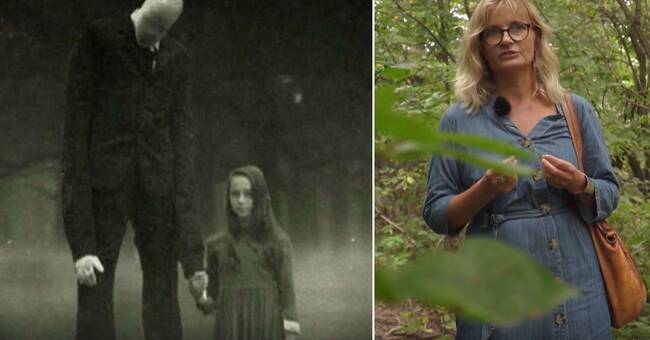You've probably heard of him, Slender man.
Maybe you have seen him in the horror film from 2018, in a Tiktok video or with your own eyes.
The tall man in a suit biding his time in the woods and online.
He often moves near playgrounds, at any time ready to abduct children and teenagers.
- Slender you are scary because you do not really know what he wants or what he does.
He acts as horror entertainment in popular culture, but also to warn strangers and pedophiles both in real life and online, says Ingela Korsell.
Spread on social media
Slender man is just one of several creatures in Modern creatureology, written by Ingela Korsell with illustrations by Reine Rosenberg.
Ingela Korsell has previously written the Pax books together with Åsa Larsson and about older folk beliefs in Väsenologi I and II.
Now she wanted to focus on our own time.
Modern essence science is described as a family book and is about the beings we tell about today - whether we believe in them or not.
- It is easy to believe that folk belief does not exist today, that it is something old, but it is probably because you live in the middle of it.
I think all parents have told me about the tooth fairy and what you have to do to get a gold coin.
We also have Santa Claus and the Easter bunny.
It is beings who really live on in our time, then there will be many new beings with the digital revolution, says Ingela Korsell.
Slender man was born in 2009
Modern beings are perhaps best known to the younger generations.
These are, for example, Black Madame hiding in the mirror, black-eyed children returning from the dead and Slender Man, which was created on an online forum in 2009. In contrast to the oral tradition of older times, new myths are created and reproduced in social media and popular culture.
- Someone starts and then fills others with a background story and tries to connect it to other myths around the world.
You create a myth, says Ingela Korsell.
Processes fears
The question is what function the stories fulfill today.
- It is about warning of things, processing fears or teaching a morality, for example to obey one's parents as with Santa Claus.
Today we have science to rely on, but many still believe in ghosts and ghosts.
I think it's because even science can not explain what happens after death, says Ingela Korsell.

